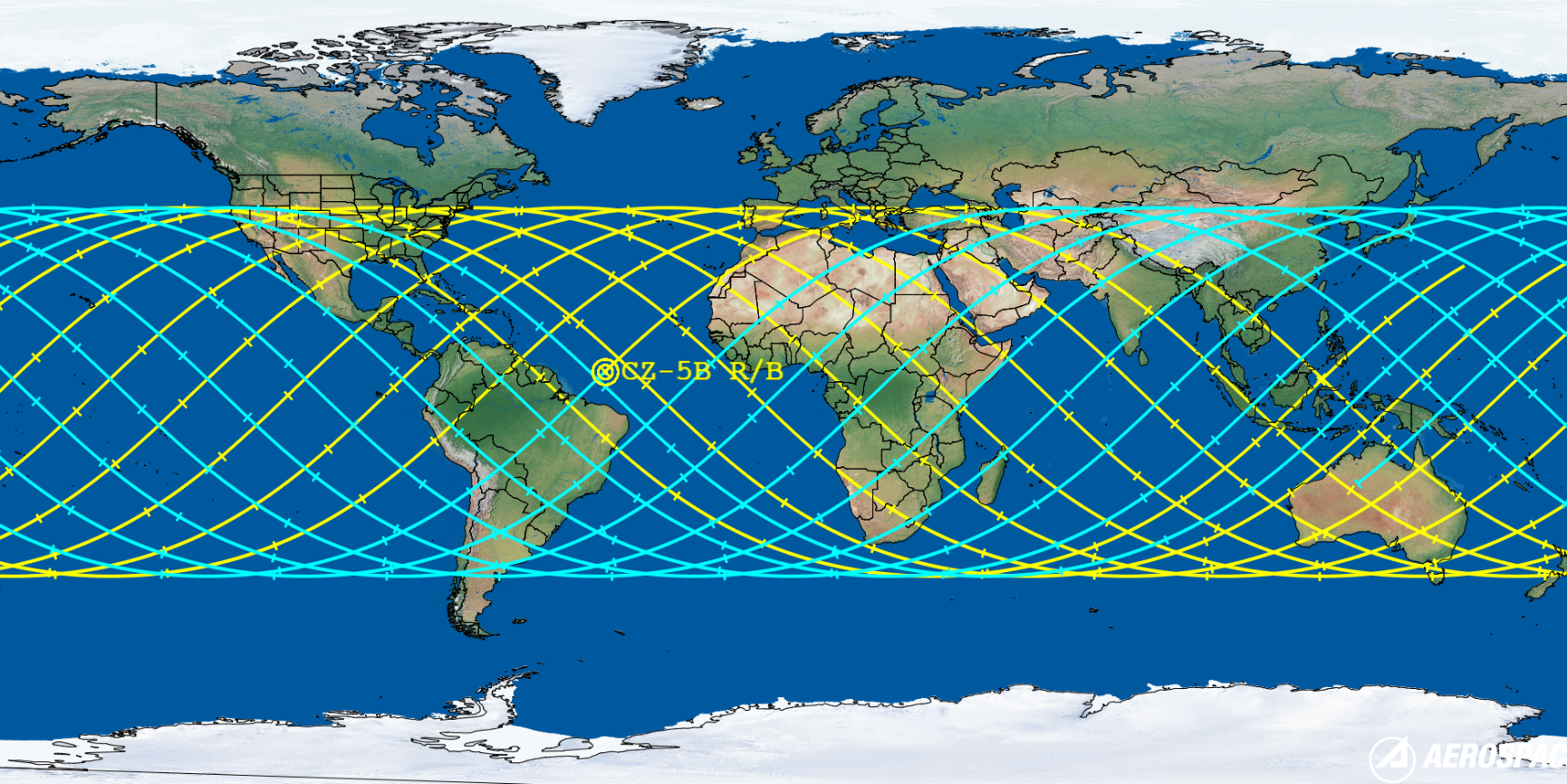China's falling Long March 5B rocket stage spotted from space (photos)
An Australian in-orbit satellite inspection company has imaged the big hunk of space junk.

A large Chinese rocket stage predicted to make an uncontrolled reentry into Earth's atmosphere on Friday (Nov. 4) has been imaged by an orbiting satellite.
Australian company High Earth Orbit Robotics posted images of the Long March 5B first stage on Twitter on Wednesday (Nov. 2), showing the roughly 23-ton (21 metric tons) piece of space junk during its slow descent to Earth.
The images were taken from a distance of 221 miles (355 kilometers), according to HEO Robotics, using an optical imaging satellite belonging to the Argentina-based firm Satellogic.
Related: The latest news about China's space program
Space-based sensors using HEO Inspect caught the #CZ5B rocket as it continues its uncontrolled re-entry back to Earth.Our space-to-space imagery and intelligence supports strategic decision-making and accountability efforts by making space transparent.Powered by @Satellogic pic.twitter.com/kPZfSypFlANovember 3, 2022
HEO Robotics says it can "image anything within the solar system on demand," and its services help "defense, governments and commercial operators visually monitor space objects with our in-orbit flyby inspection technology," according to the company's webpages.
The Long March 5B rocket successfully launched the Mengtian module to China's Tiangong space station on Monday (Oct. 31). The launch also put the large first stage of the rocket into orbit, as has happened on previous Long March 5B missions as well.

This tends not to happen with other orbital rockets, whose first stages are designed to ditch into the ocean or over unpopulated land shortly after launch or, in the case of SpaceX vehicles, come down for vertical landings and future reuse.
Get the Space.com Newsletter
Breaking space news, the latest updates on rocket launches, skywatching events and more!
The spent Long March 5B first stage is expected to make an uncontrolled reentry sometime on Friday (Nov. 4), according to the latest prediction from The Aerospace Corporation.
Follow us on Twitter @Spacedotcom or on Facebook.
Join our Space Forums to keep talking space on the latest missions, night sky and more! And if you have a news tip, correction or comment, let us know at: community@space.com.

Andrew is a freelance space journalist with a focus on reporting on China's rapidly growing space sector. He began writing for Space.com in 2019 and writes for SpaceNews, IEEE Spectrum, National Geographic, Sky & Telescope, New Scientist and others. Andrew first caught the space bug when, as a youngster, he saw Voyager images of other worlds in our solar system for the first time. Away from space, Andrew enjoys trail running in the forests of Finland. You can follow him on Twitter @AJ_FI.









